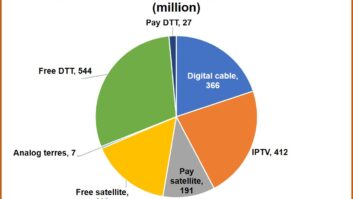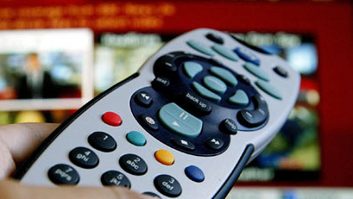
Ninety-six per cent of households have digital TV but there has been a significant increase in the proportion of homes without, according to Ofcom’s Consumer Experience of 2014 research report. Since 2013 the proportion of households with digital TV has fallen from 98 per cent to 96 percent. Take-up of tablet computers meanwhile has continued to increase over the past year, from 29 per cent to 46 per cent, and take-up of smartphones has also continued to rise, meaning they are now the most dominant connected device in the household, alongside laptops.
Ofcom’s ninth report, covers telecoms, the internet, digital broadcasting and postal services, and also includes results from Ofcom’s Digital Day study, which focuses on findings among participants aged 65 and over.
Older people spend less time on media and communications, and undertake less media multitasking each day, compared with the average adult, though still consume over nine hours of media per day. Older people devote more time to traditional methods of media consumption, with half their total media time spent on ‘watching’ activities – viewed on a TV set – compared to 39 per cent among other adults. However, older adults also contribute to the trend in the uptake of new media devices, with a quarter using a tablet. Older audiences are also trading in traditional mobile phone models for smartphones, with the increase of smartphone ownership since 2013 (up from 44 per cent to 58 per cent) mainly driven by the 45- 64-year-old age group.
There seems to be a desire for watching content on the go, as audiences increasingly favour portable media devices. Although ownership of any type of connected device remaind unchanged since 2013 (at 82 per cent), within this overall figure, there are some significant changes. There has been a decline in ownership of laptops (from 66 per cent to 63 per cent) and an increase in ownership of smartphones (from 56 per cent to 63 per cent) and tablets (from 29 per cent to 46 per cent).
The increase in mobile devices may explain the increase last year in non-ownership of digital TV – from 2 per cent to 4 per cent. This increase in non-ownership is notable among 16- 24-year-olds, suggesting younger people are using portable media devices rather than a TV set as their primary method of content consumption.
Despite worries among many in the broadcast industry about the increase in pirated content, during 2014 there was actually an increase in those choosing pay-TV services, evident across all age and socio-economic groups. Only 34 per cent of adults now only use Freeview, suggesting that audiences are looking to other services to consume a greater range of content. The study also analysed and compared data from disability groups, and found that pay-TV ownership (satellite or cable) is higher for non-disabled consumers (55 per cent) than for each of the disability groups analysed (43 per cent – 48 per cent). This may be the result of those with disabilities finding it more difficult to access or not being provided with information about these services, or being on lower incomes and being unable to afford such services.
Ofcom’s findings on the changing use of communications were not surprising: media multitasking is undertaken by almost every UK adult at some point during the week. Watching live TV and making voice calls was the most popular multitasking combination, with 42 per cent of adults doing this during the week. Overall, smartphones are ranked third in terms of time spent on devices across a typical day, after TV and desktops/ laptops. However, their central role in consumers’ lives is particularly evident among those aged 16-24; a quarter of all communications and media time spent by this age group is spent on a mobile phone and 77 per cent of the time they spend on social media is on a mobile phone. This will only increase the impact of social media on the broadcast industry, with video content increasingly invading this space– Twitter has introduced new video capabilities and Snapchat will feature video from major media brands.
The report has been published alongside Ofcom’s Consumer Experience Policy Evaluation, which considers the key findings and trends emerging from the research and uses these to assess the impact of Ofcom’s policy work and activities.







